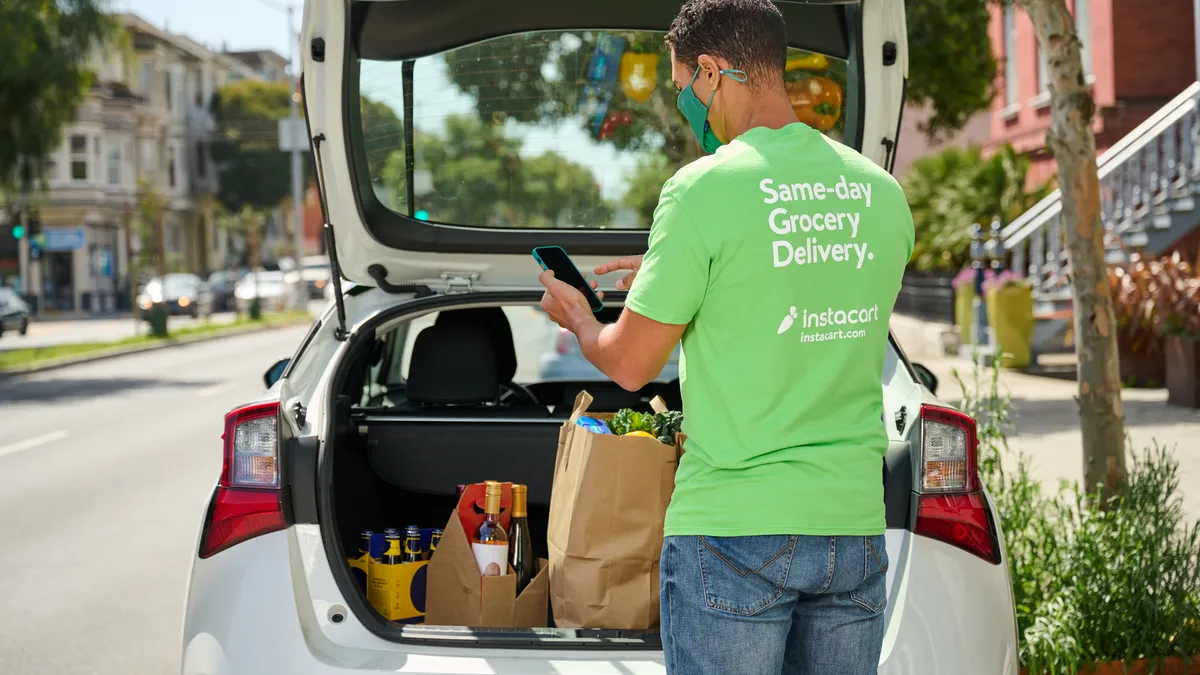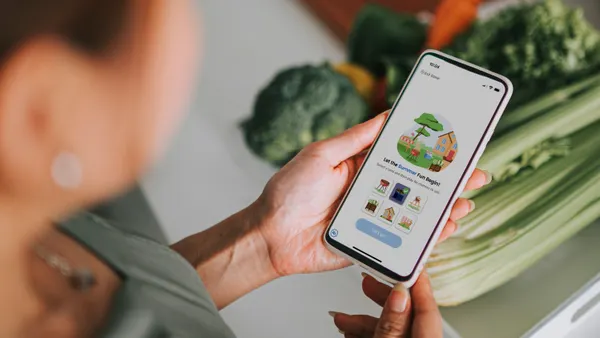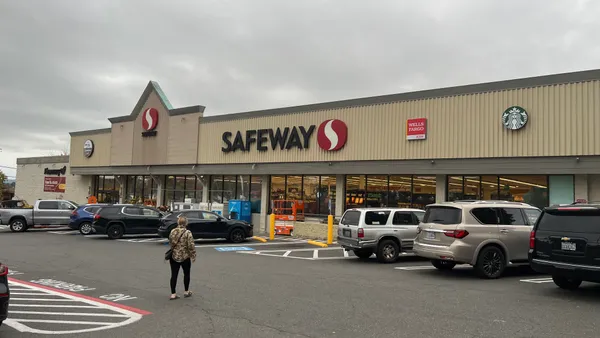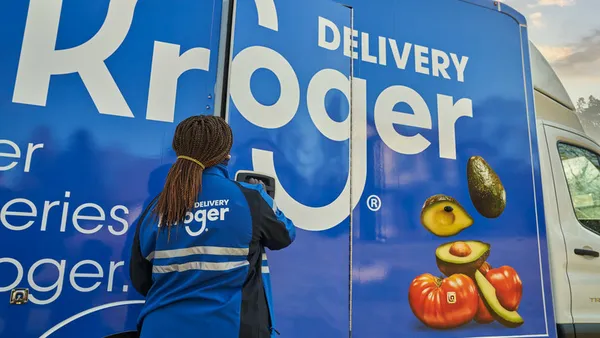Last week, Heinen’s bid farewell to Instacart, opting instead to focus on rolling out a new mobile app, upgraded shopping platform and relying on its own associates to fulfill e-commerce orders.
The announcement has raised questions both about how Heinen’s will handle fulfillment without Instacart and if other grocers will also move away from third-party e-commerce providers.
Against the backdrop of consumers being price-sensitive amid high inflation and grocers seeking more control over the consumer relationship, removing e-commerce middlemen will likely be a natural tendency for grocers going forward, said Rick Watson, CEO and founder of RMW Commerce Consulting.
“The migration of higher-income consumers to Walmart for the past two quarters indicates that even higher-income consumers tend to be trading down. ... Instacart is a premium service,” Watson noted.
Grocers have a growing number of options for how to handle online orders from offering service through marketplace apps to turning to white-label fulfillment providers to building the e-commerce infrastructure in-house. Some regional grocers like SpartanNash and Giant Food have invested in branded services that co-exist alongside partnerships with app marketplace giants like Instacart and DoorDash.
“I believe there is a wave coming of retailers that are becoming more tech savvy and are realizing that they are paving the way for Instacart to own the customer and disintermediate the retailer,” said Ken Morris, managing partner of Cambridge Retail Advisors. “If you don’t own the customer, you lose the war.”
Analysts noted that challenges remain, however, with online grocery logistics and profitability for retailers, especially smaller ones. Shifts in how grocers are approaching their e-commerce strategies, though, seem to signal third-party marketplaces like Instacart may play a diminished role on the delivery front in the future.
Instacart’s suite of retailer solutions can be a cost-effective way for small and medium-sized grocers to scale in e-commerce without committing to the expense and complexity of building their own solution, especially during rapid periods of change, like the pandemic, said Neil Saunders, managing director of GlobalData Retail.
“The problem, however, is that by partnering with Instacart retailers cede some control,” Saunders said. “They don’t control the experience or the customer journey, which can take some getting used to. They also don’t have complete control over how to innovate and evolve their e-commerce proposition. On top of these things, there is a risk that a retailer becomes too beholden on Instacart as e-commerce grows.”
That desire for more control over customer data and customer experience is serving as a driver for taking more ownership of e-commerce, Watson said.
“That doesn't mean that there aren’t places for a portion of your revenue to be from a third party but you generally don't want it to be an increasing percentage over time,” Watson said.
The bulk of Heinen’s 23 stores are in the Cleveland, Ohio, area, and the family-owned grocery chain is well-known in that metropolitan area, Watson said. The regional chain doesn’t need the nationwide reach, access to delivery workers across multiple markets nor exposure that Instacart can provide, he said.
“If you're a small retailer, and nobody knows who you are, and maybe you're not easy to get to, [then] Instacart is a great thing because they bring you traffic. ... People know Heinen’s. It’s not a mystery to people in that market,” Watson said.
He added: “I think the regional grocers are more at risk for abandoning Instacart, because they already have the name recognition and people have a go-to grocer.”

Rethinking e-commerce operations
Anne Mezzenga, a Target veteran and co-CEO of retail blog Omni Talk, noted that Instacart has helped regionals execute speed and efficiency with online orders. As micro-fulfillment costs come down and other economics improve with grocery e-commerce, however she said she expects retailers to build their own omnichannel ecosystem that likely don’t include Instacart.
While Mezzenga said there are providers that can provide e-commerce efficiencies for retailers, grocers need to have the tech talent to vet those providers and work with them to create that ecosystem. Retailers who don’t have that internal team in place will likely keep turning to providers like Instacart, Mezzenga said.
“It's kind of difficult when you're still hanging on to a legacy system and you're trying to integrate that into the new way of thinking,” she said. “I think it makes sense to have them as like the crawl, walk, run approach. And I think the pandemic was kind of the crawl for a lot of these retailers.”
Now, grocers are considering if and how they can tackle e-commerce in a way that is less reliant on a third-party marketplace serving as the face of their e-commerce operations, Mezzenga said. At the same time, retailers are also questioning this year which partnerships and investments have ROIs, she said, noting that grocers have access to fulfillment technologies that allow ownership of their e-commerce operations with ROIs that provide long-term benefits.
“Best practice to me is to own the customer experience/journey and use third parties for delivery only,” Morris said. “Even then, the retailer should only outsource delivery if it isn’t economically feasible to own the journey across the entire process.”
As e-commerce growth moderates, Saunders said more retailers may decide to invest in their own e-commerce systems — posing an ever-present risk to Instacart’s business model. Instacart and grocers also have to contend with the looming speculation in the industry that Instacart could turn into a competitor to retailers, Saunders noted. (Instacart has said it does not plan to become a retailer.)
“This probably isn’t foremost of mind when retailers are making a decision, but it [is] something they are constantly vigilant about,” Saunders said.
Meanwhile, Instacart is facing rising competition from the likes of Uber, DoorDash and Shipt in the gig delivery marketplace space. “[The] logistics and last mile space is just a race to the bottom in terms of who-can-do-it-the-cheapest or who-can-do-it-the-fastest — and that's not a way to build a business,” Mezzenga said.
Mezzenga and Watson noted that Instacart has already started diversifying its business with a focus on digital solutions for retailers. Last summer, Instacart finished integrating FoodStorm, the catering software firm it bought last fall, into its Instacart app; disclosed that it had bought Eversight, which runs an artificial intelligence-powered pricing and promotions platform; and unveiled its “Connected Stores” bundle of technologies, such as smart carts from Caper AI, which the company bought in fall 2021.
Under CEO Fidji Simo, who Instacart announced summer 2021 would replace founder Apoorva Mehta in the role, Instacart has seemingly pivoted away from its emphasis on being a gig delivery provider and retailer marketplace to being a software and services provider for retailers, Watson said.
“I wonder if this [gig delivery marketplace] is a big focus of the business going forward, or are they trying to get out of this business given their recent acquisitions?” Watson said. “Are they trying to become more of a software company with supplementary delivery services or will delivery may remain the bulk of their revenue?”












